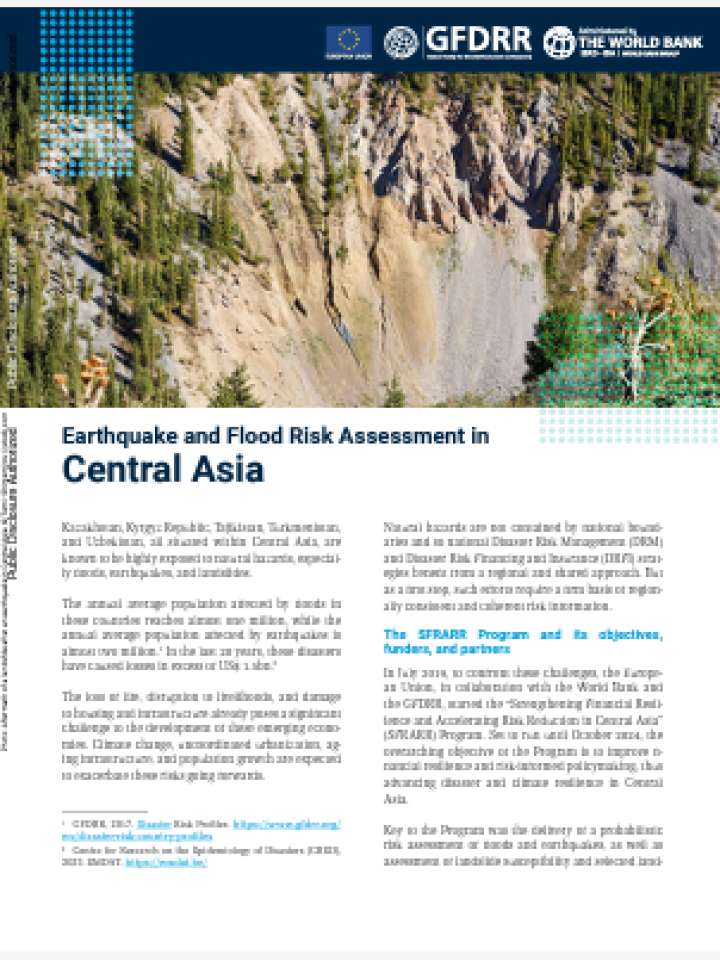Earthquake and flood risk assessment in Central Asia
This assessment aims at the delivery of a probabilistic risk assessment of floods and earthquakes, as well as assessment of landslide susceptibility and selected land-slide scenarios, and their impact on multiple asset types. These analyses have recently been concluded and provide a firm foundation for devising coherent and consistent solutions across geographies and economic sectors. The regional approach to the probabilistic disaster risk assessment significantly benefits each country by providing common analytics and metrics and facilitating training, sharing of knowledge and technology, and co-development of solutions for national and transboundary risks.
Key recommendations from the assessment include:
- When it comes to earthquake mitigation, first, it is crucial to update seismic risk studies. By doing so, we can better understand the areas and sectors most at risk and prioritize the implementation of risk reduction actions at national, subnational and sector levels.
- A key aspect of earthquake mitigation is retrofitting critical infrastructure, such as hospitals, bridges, public buildings, and schools, as well as residential blocks. Campaigns should be carried out to strengthen assets in sectors that are more prone to earthquake risk, and fiscal incentives could be provided to encourage the retrofitting of residential and commercial properties.
- Turning to flood risk mitigation, identifying flood hazard zones is a fundamental step. The maps generated by the study provide valuable information regarding the main flood hazard areas. Similar to earthquake mitigation, high-risk zones should be identified to prioritize the implementation of risk reduction actions.
- To effectively manage flood risk, a combination of measures can be implemented, including both grey infrastructure (e.g., dams, levees) and nature-based solutions (e.g., wetland restoration, riverbank stabilization). These flood control measures help to reduce the overall risk and protect vulnerable areas from the destructive impact of floods.
- A detailed evaluation of key lifelines should be conducted, such as power generation and transmission in areas prone to high earthquake and flood hazards. This evaluation will provide essential insights for improving the performance and resilience of these critical systems during crises.
- Early warning systems including detection systems and training on evacuation actions should be established to ensure that the population knows how to respond effectively during a seismic or flooding event. These measures collectively contribute to minimizing loss of life and improving overall preparedness.
Explore further
